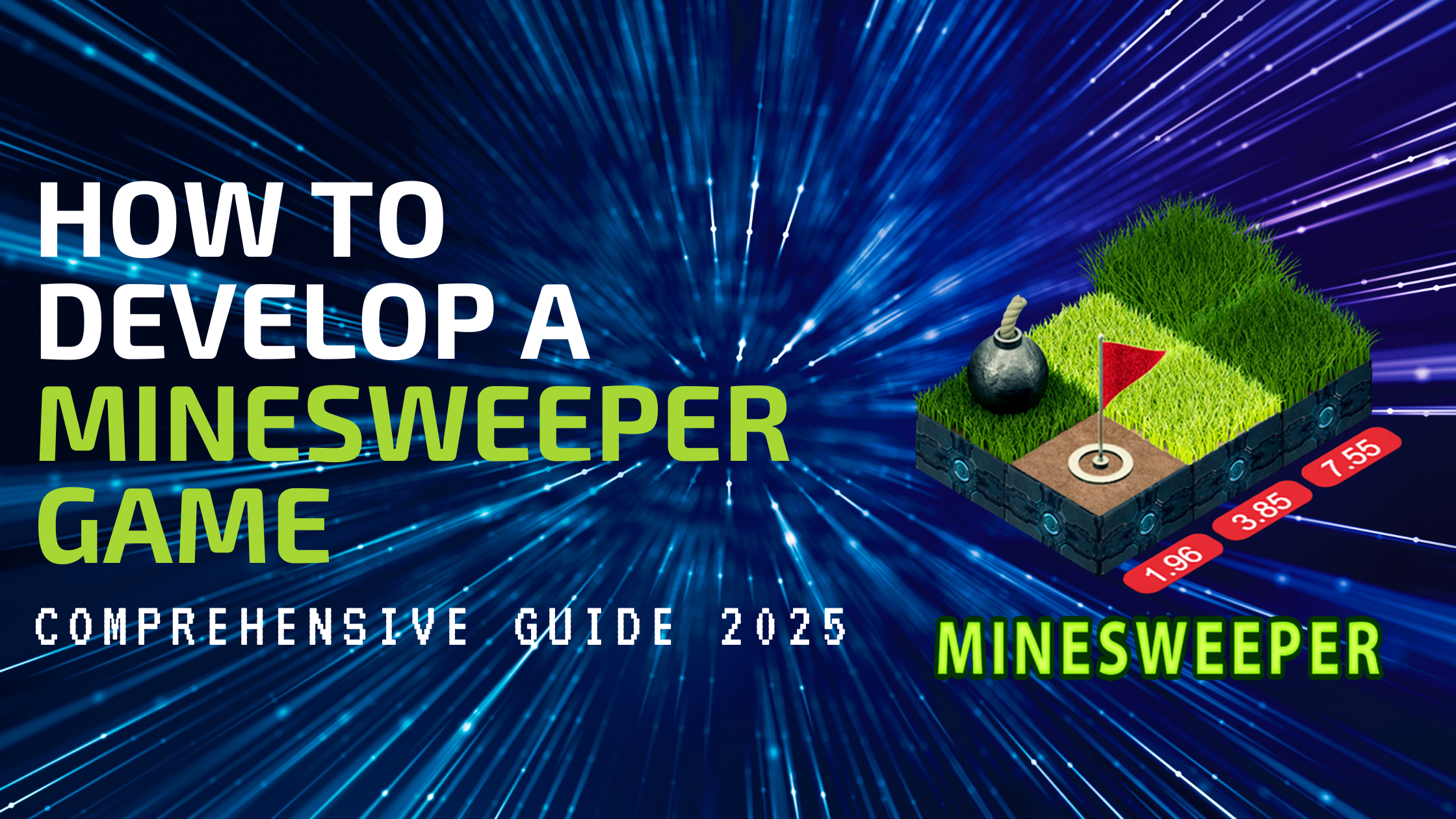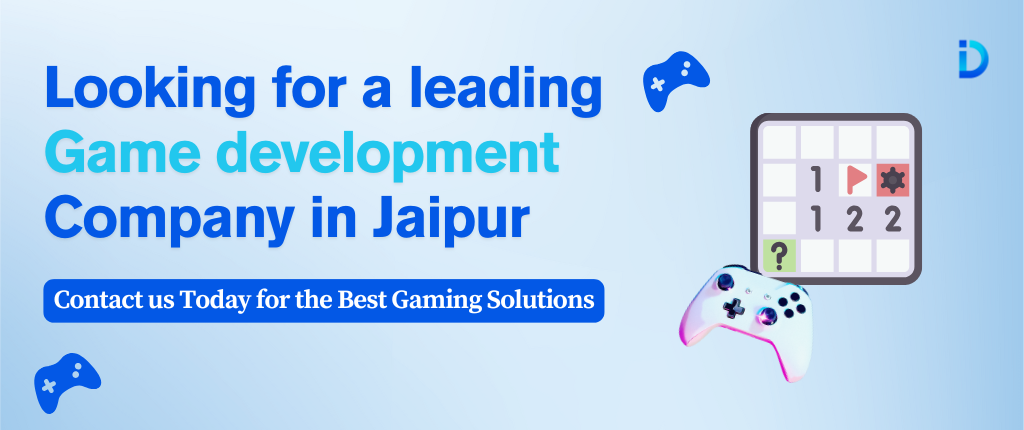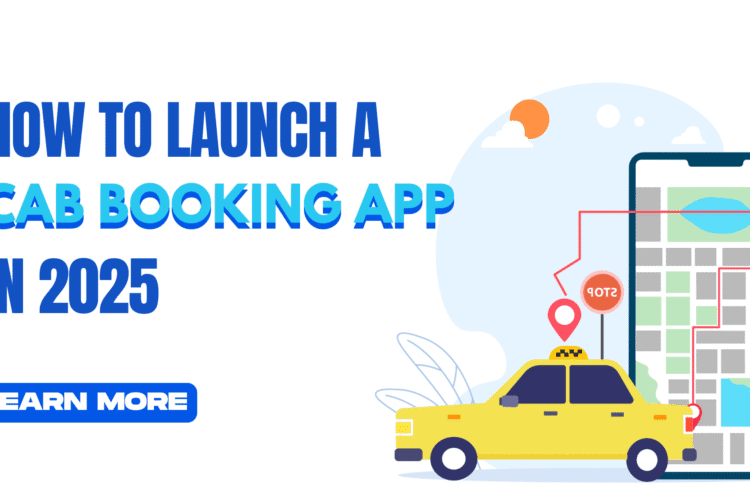
Making the Minesweeper game could be a wildly satisfying project for an aspiring or professional developer. It’s an excellent method to develop your programming abilities, grasp basic game mechanics, and provide a pleasurable and nostalgic experience for the players. This tutorial will guide you through the procedure to bring this Minesweeper game to the forefront.
Back to Basics: The Enduring Appeal of the Minesweeper Game
The most famous single-player puzzle, well-known for its inclusion in operating systems from the beginning, requires players to eliminate the rectangular piece of paper that contains the explosive device hidden in it without detonating the device. The players are provided with clues to the quantity of devices within adjacent cells and are able to determine their approach. The attraction of this grid-based Minesweeper game is its sheer elegance as well as the deep thinking required by it.
This puzzle is a wonderful blend of deductive thinking and calculated risk that makes every session distinctive and exciting. It doesn’t require any special equipment, only a keen mind! In the present, bringing out an adaptation of the classic puzzle game can be a great task for developers. The game effectively shows mastery of fundamental programming principles, including UI/UX design, as well as the implementation of algorithms. In terms of a portfolio, it showcases the skills of problem solving and attention to detail, and as an application, it gives users a clear user experience that is addictive.
2. What is a Minesweeper Game?
The game takes place in a grid of squares. Certain squares hide explosives, whereas other squares are secure. Once a player has clicked the safe square, it shows an amount that indicates how many explosive devices exist within its 8 adjacent squares, and/or it’s empty, creating a chain of events regarding adjacent cells that are empty. The players can “flag” squares they suspect have explosive devices.
The goal of the Minesweeper game is to find all safe squares and avoid clicking on any square that contains the explosive devices. The Minesweeper game will be won if all squares that are not explosive devices are discovered. It is possible to increase the difficulty to different levels of difficulty, which can modify the grid’s size as well as the size of the explosive devices. The most common levels are:
- Basic: A smaller grid that is smaller and has fewer devices.
- Intermediate Medium Grid that has a lower number of devices.
- The Expert grid is a large one that has a large number of devices that provide the most challenging difficulty.
3. Planning Your Minesweeper Game
Before you dive into programming, making a good plan is necessary. Think about the features you would like to add. The use of a timer to track performance. Flags help to identify suspect places, and an automatic reveal feature (where pressing a cell that has the proper number of flags surrounding it shows neighbors with flags that aren’t) improves the Minesweeper game.
Select the size to determine your difficulty level (e.g.,9×9 is for beginners, 16×16 for intermediate, and 30×16 to be used for the expert) and then the number of explosive devices hidden. Can your game play on a browser for the web, on your smartphone, or as a separate desktop app? The choice you make will greatly impact the technology stack you have.
4. Tech Stack & Tools Required for Minesweeper Game
The software you pick is based on your desired platform as well as your current knowledge base.
- Frontend for a web-based variant, HTML, CSS as well and JavaScript are essential. Frameworks like React can streamline development. Mobile-friendly, Flutter provides a single source code base that works for Android as well as iOS. You can also utilize native languages such as Kotlin (Android) as well as Swift (iOS).
- Backend (optional): A backend isn’t required to play the game’s fundamental strategy; however, it’s helpful for functions such as worldwide leaderboards and for saving players’ progression. Node.js is a preferred choice. Firebase is a powerful serverless option for data storage as well as user authentication.
- Game Engine (if employed): While not necessarily required in a basic game, using game engines such as Unity and Godot could simplify rendering and interactivity, particularly when you intend to include additional visual effects that are more complicated or cross-platform implementation.
- Tools: Figma is a great tool for creating the user interface. Git is essential to manage version control. Visual Studio Code is a popular and versatile code editor.
5. UI/UX Design Considerations
An easy and clear interface is crucial to having an excellent player experience. Grids should be visible and easy to navigate. Each cell must reflect its current state (unrevealed or revealed or flagged). Make use of clear visual clues such as various background colors to reveal cell walls, bright numbers, and an identifiable flag icon. If an explosive device gets damaged, it is displayed the location of the device is displayed.
The use of dark or light themes will increase the user’s preference as well as comfort, particularly during long-term gameplay. Also, make sure your game appears and runs effectively on different sizes of screens, including small phones to massive screen monitors for your desktop. This is achieved by creating flexible layouts as well as adjusting the dimensions of the elements accordingly.
6. Core Game Logic Implementation
That’s where the magic takes place!
a. Grid Creation
The Minesweeper game requires a highly interactive grid that is based on the level of difficulty chosen. Each of the cells in this grid has to record its status: whether it’s a containing explosives, and if it’s disclosed or flagged, and also the total number of explosive devices.
b. Mine Placement Logic
The most important thing is that explosives should be installed immediately following the first click of a player. To avoid a loss that is immediate and unreliable. The algorithm you’ll require is to randomize the number of devices over the grid. Then, repeat the process through all remaining cells to compute and record the number of explosive devices in the adjacent cells for each.
C. Cells Resolve the Mechanism
After a player has left-clicked an item:
- If the device is explosive, the game will end.
- If it’s a numerical number, you should reveal that number.
- If it’s not empty (0 nearby devices), if it’s empty (0 adjacent devices), use the flood fill technique (recursive show) that will automatically reveal every empty cell that is connected to it as well as their borders. This can be a very satisfying aspect of the game experience for those who play.
D. The Right Click and Flagging
Introduce a right-clicking feature (or pressing long-press on mobile) to remove or place an alert on a suspected phone. Make sure that a counter is updated in order to determine the number of flags currently set against the total amount of explosive devices.
E. Game Over and Victory Game Over & Victory
Once an explosive device has been activated, the Minesweeper game is over, with all hidden explosive devices will be discovered. The winner is after all cells of the device that are not explosive have been revealed.
Read Also: Wanna develop an HTML5 Game? HTML5 Game Development guide
7. Advanced Features to Consider
For your game to shine, you should consider incorporating these features:
- Timer and high-score monitoring: Track and record the amount of time required to finish every difficulty level.
- Menu for selecting difficulty: An easy and user-friendly way for users to pick their difficulty.
- Animations and sound effects. Sound effects and animations: Subtle sound effects of flags, clicks, winning and losing, and animated cell reveal that are smooth significantly enhance your enjoyment.
- Resume and Pause functionality allows players to stop for a while without affecting their performance.
- Leaderboards (using the backend of Firebase): Let players be competitive globally or in a group to see who can run the fastest.
- System of Hints (optional): Provide only a few hints that show a safe cell.
- The feature of safe-click Ais function that allows cells with the right number of flags is clicked and automatically shows its neighboring cells that aren’t flagged.
8. Testing and Debugging the Minesweeper Game
Testing thoroughly is vital to the smooth running of a game.
- Manual testing of each feature. The game can be played in depth at any difficulty by testing each button or interaction as well as the entire game.
- Unit tests to test core logic functions. Create automated tests to test functions such as mine place, calculation of adjacent count,s cell reveal logic, and mine placement in order to verify that they perform according to plan.
- Responsive behavior when used on different devices: Test the HTML0 responsive behavior on various sizes of screens and in different orientations to verify that the UI is properly adjusted.
- Repair UI bugs and edge-case situations. Be aware of the visual appearance of your device and other unusual circumstances that could trigger unexpected behaviour.
9. Monetization Strategy of Minesweeper Game
If you are planning to make your game for sale, you should consider these tips:
- In-app advertisements (AdMob and Unity ads): Display banners or interstitial advertisements, especially during games.
- Premium Features (themes and hints): Offer unlockable themes, extra hint packs, and ad-free versions as a time purchase.
- Game bundles, or app store sales: The game can be sold as an individual app in app stores.
10. Publishing Your Minesweeper Game
After your game is finalized, it’s now time to show your game all over everyone else!
- Web: Deploy via GitHub Pages, Netlify, or Vercel. These platforms provide inexpensive hosting services for static web apps.
- Mobile: Make your app in preparation for release in the Google Play Store (Android) as well as the Apple App Store (iOS) in accordance with their guidelines.
- Desktop For desktop apps, Tools such as Electron allow you to bundle Web technologies in an app that is native to the device, and if you’re using Unity, it is possible to create directly for a variety of desktop operating platforms.
11. Marketing & Promotion Tips
A great game requires clarity.
- Showcase on GitHub and in dev communities: Share your work with code repositories and dev forums.
- Participate in gaming forums as well as Reddit: Connect with the communities that are interested in puzzle games.
- Make use of gameplay videos on Instagram, YouTube Shorts, etc.: Visual content is extremely efficient for rapid marketing.
- Learn from feedback and then iterate: Take note of your players and take their feedback to improve your game in the future.

The process of creating a Minesweeper game, such as the classic grid-based puzzle, can be extremely beneficial in terms of learning. It hones your skills in the areas of logic, algorithm design, and development of user interfaces. If you’re looking for a solid portfolio or a popular app, the process of developing this game will surely enhance your problem-solving skills and your frontend/backend abilities. You can add your unique twist to the game, possibly unique themes, innovative game types, or the addition of a multiplayer feature to make your game stand out from the crowd!


